Search results for “watershed”
The Deerfield River Watershed Chapter is committed to the conservation of cold water resources in our catchment area. This includes the mainstem of the Deerfield River and her major tributaries: The Chickley River, Cold River, Clesson Brook, North River, Bear River, South River, Green River as well as her minor tributaries. Our conservation efforts are…
Trout Unlimited works with our conservation partners to identify areas where protection and restoration can benefit not only trout and salmon, but also other fish, aquatic species and human communities. TU scientists were instrumental in developing the Native Fish Conservation Area concept, where watershed management is focused on the long-term persistence of native fish communities
Wednesday, August 12, 2020 Contacts: Leslie Steen, NW Wyoming Program Director, Trout Unlimited, 307-699-1022, lsteen@tu.org Patrick Barry, Forest Fisheries Biologist, Bridger-Teton National Forest, 307-886-5330, Patrick.m.barry@usda.gov Kelly Owens, Forest Hydrologist, Bridger-Teton National Forest, 307-739-5598, kelly.owens@usda.gov Tribasin Fish Passage and Watershed Restoration Project Begins in Upper Greys River Watershed. Trout Unlimited (TU) and the Bridger-Teton National Forest (BTNF) announced today
Friday, October 4, 2019 Contacts: Leslie Steen, Snake River Headwaters Project Manager, Trout Unlimited, 307-699-1022, lsteen@tu.org Kelly Owens, Forest Hydrologist, Bridger-Teton National Forest, 307-739-5598, kelly.owens@usda.gov Trout Unlimited (TU) and the Bridger-Teton National Forest (BTNF) announced today that Phase 2 of the Tribasin Fish Passage and Watersehd Restoration Project is scheduled to begin during the fall
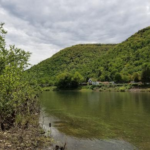
By Shawn Rummel The West Branch Susquehanna drains an area of approximately 7,000 squares miles in north-central Pennsylvania, a watershed that’s double the size of Yellowstone National Park. Due to the large amount of public land in the basin —more than one-third is state forest, state park, or state game lands — it is a tremendous
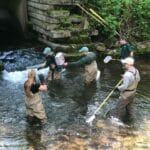
Trout Unlimited staff and Ashokan-Pepacton chapter members assisted NYS Department of Environmental Conservation in completing the East Branch Delaware River Trout Habitat Improvement Project (HIP). The project underway since 2016, was designed to better understand potential challenges facing trout in the watershed and to help develop mitigation and management strategies to reduce potential water quality and movement impacts caused by the Lake Wawaka dam in Halcottsville, NY. The project, spearheaded by concerned local
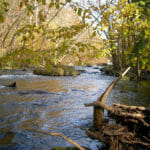
The Upper Delaware Watershed is home to many of New Jersey’s best trout fishing waters, including the Musconetcong River. Here TU has removed barriers to aquatic organism passage and strategically restored over 6 miles of habitat in degraded areas to increase available habitat, food, and water quality for trout, especially native brook trout. The success
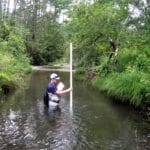
By Jacob A. Fetterman When I decided to change my major toward the end of my freshman year at Lock Haven University, I had no idea about the journey to follow. I was looking for a career that would allow me to positively impact the natural world I grew up admiring. Five-and-a-half years later, it is safe to say that I am well
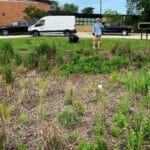
By Jamie Vaughan Hairy Penstemon is blooming at the Parkside Elementary Rain Garden in Michigan. This rain garden is a type of green infrastructure utilizing native plants to help developed areas function more naturally, thus keeping polluted and warmed stormwater runoff out of Rum Creek. We were out in the community with Abigail Henschell (pictured above),
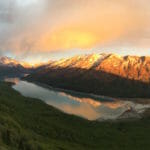
While you and your family think through fall outings, we would like to encourage you to take a trip to the Eklutna River valley – we created a family field trip for the Eklutna River watershed so that your family can learn while exploring the area







